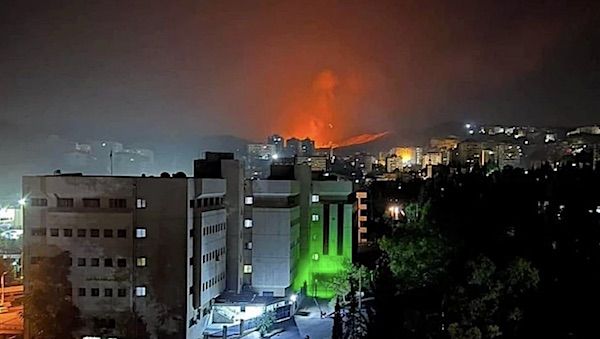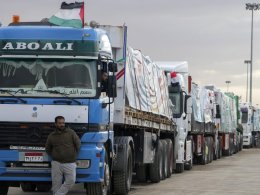Overnight Sunday Israel Air Force jets conducted a series of airstrikes in northwestern Syria, targeting sites assessed to be used by Iranian or Iranian-backed forces, which were thought to produce chemical weapons.
According to Syrian state media, at least 14 people were killed in the strikes – thought to be some of the heaviest and widest-scale in years – with dozens more wounded. Reports suggest at least 10 sites were hit in Masyaf, in the Hama region. There were additional claims that there were attacks in Hama, Homs, Tartus, and Damascus, although later transpired impacts in the latter three locations were caused by falling Syrian interceptor missiles.
The Syrian Observatory for Human Rights, a U.K.-based war monitor aligned with the Syrian opposition, said there were four attacks in less than three hours, targeting military sites west of Hama where "where Iranian militias and experts are stationed to develop weapons in Syria," and a floating object off the coast of Baniyas, according to the Jewish Chronicle.
Syrian air defense activated earlier tonight during Israeli airstrikes in the areas of Tartus and Masyaf. pic.twitter.com/UnjCDDexqy
— Joe Truzman (@JoeTruzman) September 9, 2024
Among the sites hit was the so-called Scientific Studies and Research Center, known as CERS or SSRC, a major military research laboratory for chemical weapons. The center is thought to house a team of Iranian military experts – in other words members of the Islamic Revolutionary Guard Corps (IRGC) – who according to Israel are involved in the production of precision surface-to-surface missiles.
Even before the Swords of Iron war, which Hamas started with Iranian backing on Oct. 7, Israel has consistently targeted weapons shipments from Iran, as well as men and materiel in situ in Syria. The Islamic Republic has used its leverage over President Bashar al-Assad's government, which it helped remain in power during the bitter fighting of the Syrian Civil War, to help create its land bridge to move weapons and men closer to Israel.
Jerusalem has neither officially confirmed nor denied reports about IAF planes striking targets in Syria, although it rarely broadcasts when it has done so. However, in February Jerusalem revealed it had attacked more than 50 targets belonging to Hezbollah and other Iran-backed terrorist groups in Syria since Oct. 7.
Almost 17 years to the day, on Sept. 6, 2007, Israel conducted "Operation Orchard," which destroyed Syria's heretofore secret nuclear program in the Deir ez-Zor (or Dair Alzour according to the International Atomic Energy Agency) region of Syria. That attack followed the even more daring "Operation Opera," the 1981 attack on Saddam Hussein's nuclear reactor in Osirak, Iraq.
What it does show is a clear pattern of Israel following the so-called "Begin Doctrine," which stipulates that Israel would not tolerate the attainment of nuclear weapons by their implacable enemies and would do whatever possible to prevent this eventuality.
Shifting focus to the north?
These strikes come amid increasing calls – including from former IDF Chief of Staff and former Prime Minister Benny Gantz no less – for Israel to turn its attention with both urgency and seriousness to the northern arena. In particular the ongoing simmering war with Hezbollah shows no sign of abating, if anything it seems to be ratcheting up on a daily basis.
Israel's preemptive strike against hundreds of Hezbollah missile launchers in the early hours of Aug. 25 may have offset what was assumed to be a massive retaliatory attack for the killing of the Iranian proxy's CEO, Fuad Shukr, the threat still remains. And on the sidelines, Iran is still suggesting it is winning the psychological battle, boasting its response to the elimination of Hamas chief Ismail Haniyeh in an IRGC compound has yet to be avenged.










